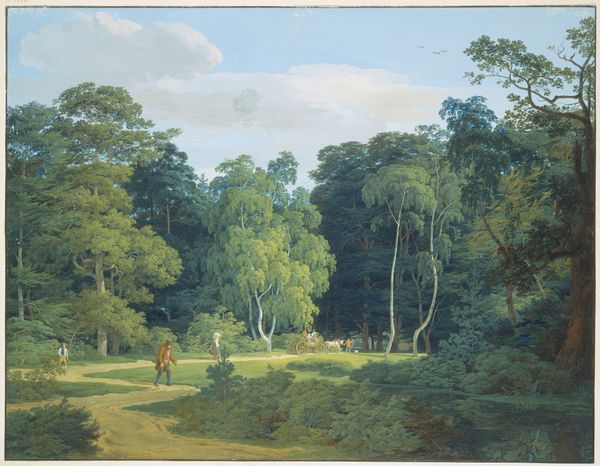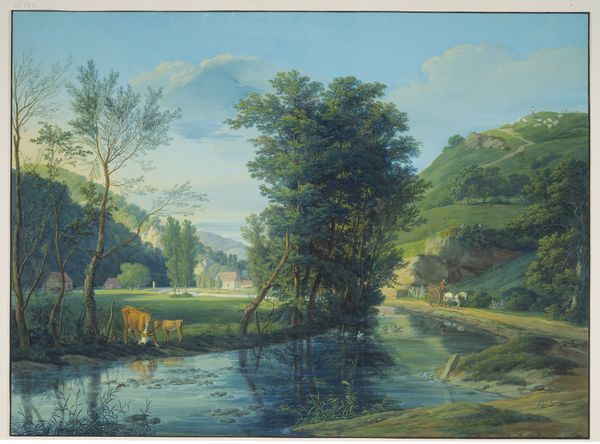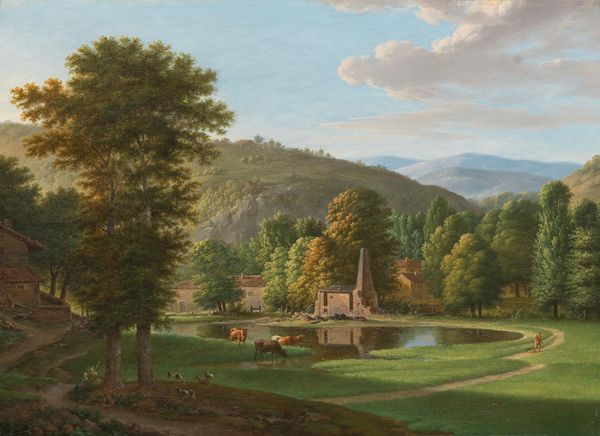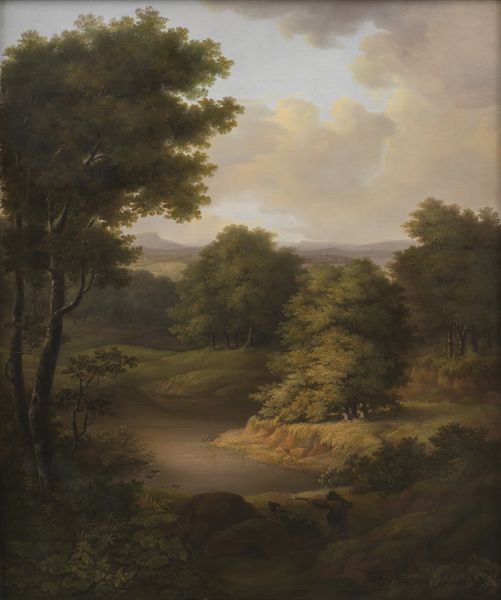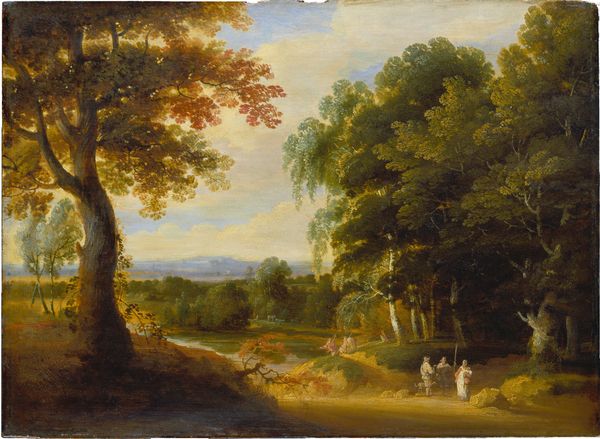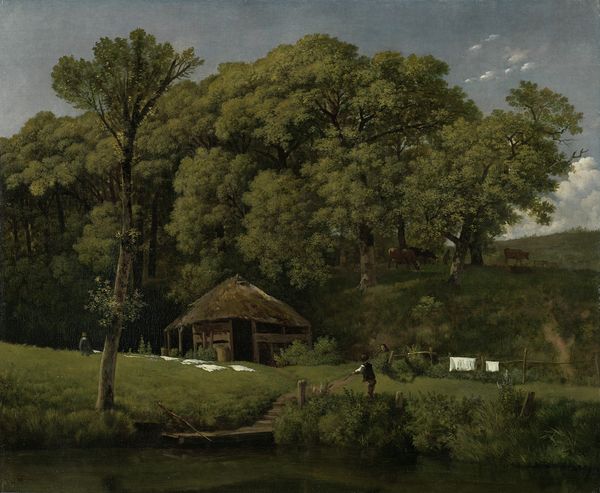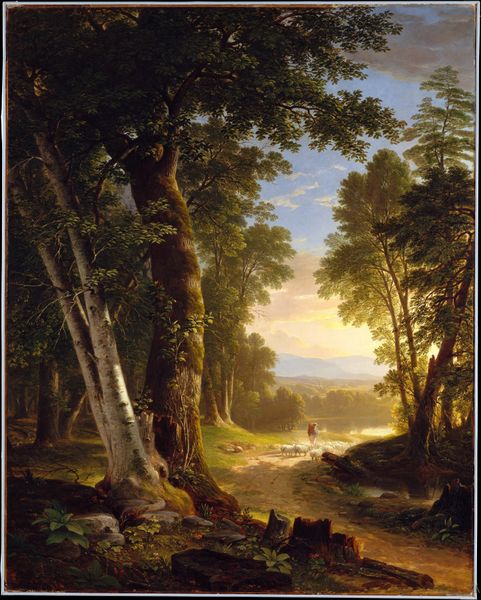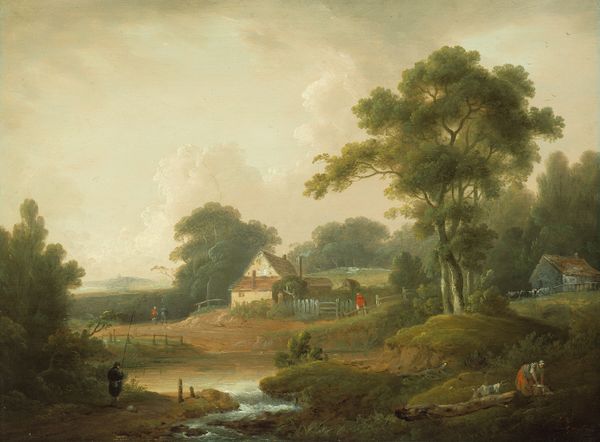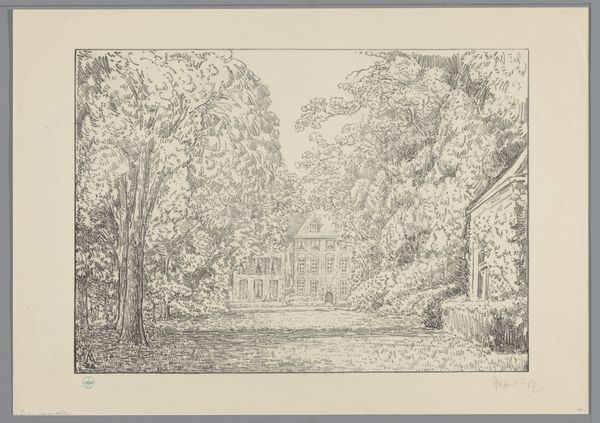
drawing, gouache, plein-air
#
drawing
#
gouache
#
plein-air
#
landscape
#
romanticism
#
genre-painting
#
watercolor
#
realism
Copyright: Public Domain
Curator: Here we have Anton Radl's "Cattle Watering in the Woods, Hunter to the Left," created around 1805. It's a striking plein-air gouache and drawing piece. Editor: What a dreamy little vista! The hazy light, the cows... It feels like a snippet from a fairytale. Like I've stumbled upon a secret clearing. Curator: Note the carefully orchestrated composition. Radl uses the trees as framing devices, drawing the eye toward the central clearing where the figures and animals gather. There's a delicate balance between the structured foreground and the ethereal background. Editor: The texture is marvelous. That thick, juicy green... You can almost smell the damp earth. It's so richly colored, yet retains this soft, romantic quality. I can sense Radl relishing being outdoors, immersed in nature. Curator: Precisely. Radl was part of a wave of artists drawn to direct observation of nature. We can clearly see a Realist influence, blended with Romantic sensibilities regarding the landscape. The scene depicts an ideal relationship between humanity, livestock and nature. Editor: I like the contrast between the calm cows drinking peacefully and that lone hunter lurking on the left. Is that a commentary on man's relationship with nature? Or is he just admiring the scenery, too? It hints at an unseen narrative. The hunter is more of a silhouette and as a child, it made me scared since he appears a little ominous at the first sight. Curator: Indeed. While the image may initially appear idyllic, the hunter introduces a subtle tension. It reminds us that even in this pastoral scene, the presence of humans alters the dynamic. The artwork embodies, for me, the visual encoding of early 19th century sociopolitical life within its landscape representation. Editor: What do you make of the relatively high point of view? Does it add a layer of meaning to how we perceive nature? The viewpoint encourages a deeper absorption into this scene; you want to be in there. It brings to mind notions of finding our space and time within natural ecologies. Curator: It suggests perhaps a desire to capture as much of the landscape in a single field of vision as possible. A Romantic approach for complete coverage and understanding. Editor: Radl certainly creates a sense of timeless wonder. Thank you, Radl. Curator: An exemplary example of nature perfectly still! Thank you both for your attention to this work.
Comments
No comments
Be the first to comment and join the conversation on the ultimate creative platform.
